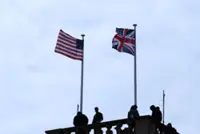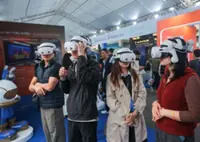FILE PHOTO: The San Francisco skyline is seen behind a self-driving GM Bolt EV during a media event where Cruise, GM's autonomous car unit, showed off its self-driving cars in San Francisco, California, U.S. November 28, 2017. REUTERS/Elijah Nouvelage/File Photo
(Reuters) -General Motors' Cruise robotaxi unit could face $1.5 million in fines and additional sanctions over its failure to disclose details of an Oct. 2 accident in which a robotaxi dragged a pedestrian 20 feet (6.1 meters) after being struck by another vehicle, a California agency said.
Separately, GM Chief Executive Mary Barra said on Monday that the automaker's external review of Cruise's safety will last into the first quarter of 2024.





